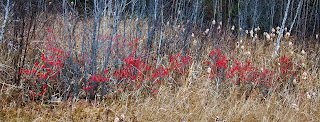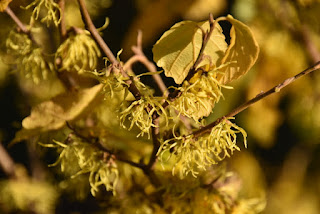NATURE MONCTON NATURE NEWS
October 31 2024
Nature
Moncton members as well as any naturalist in New Brunswick or beyond are invited to share their photos and
descriptions of recent nature sightings to build a fresh (almost) daily edition
of Nature News
To respond
by e-mail, please address your message to the information line editor, nelsonpoirier435@gmail.com .
Please
advise the editor at nelsonpoirier435@gmail.com and proofreader Louise Nichols at Nicholsl@eastlink.ca if any
errors are noted in wording or photo labelling.
For more information on Nature Moncton, check the website at www.naturemoncton.com .
Proofreading
courtesy of Louise Nichols at nicholsl@eastlink.ca
**When your bird dog points out the window, you
better look to see what it is. In Jane LeBlanc's case, her Irish Setter was
pointing to a Ruffed Grouse in a birch tree. Jane notes they usually
don't show up until there is snow on the ground.
(Editor's note: the winter diet of the Ruffed Grouse is nutritionally packed tree buds that obviously include birch catkins as Jane's photo shows.)
Also in the yard, Jane's last Witch Hazel shrub
is still in flower.
(Editor's note: The botanical antifreeze possessed by
the Witch Hazel shrub is truly amazing. Its brilliant yellow flowers defy all
odds blooming into November and occasionally December.)
**Aldo Dorio’s photographic catch on Wednesday was a
side-by-side photo of an American Golden-plover and a Dunlin at
Hay Island to compare these two species that can stay with us in New Brunswick
until late in the shorebird season.
**Jessica Bowie in Miramichi photographed a fly
recently with very unusual markings that left a lot wondering what species it
may be. A few did suggest the possibility of a fungal infection, but Diptera
guru Tony Thomas solved the mystery, and I am going to paraphrase Tony’s response
below:
“The golden hairs on the thorax of the fly suggest it
is a Cluster Fly. As a maggot, it
is a common predator/parasite of earthworms. The adults overwinter, often in
buildings. The fly in Jessica’s photo has been killed by the Pathogenic
Fungus, Entomophthora muscae.)"
**Nelson Poirier noted the leaves have now fallen
from Winterberry Holly shrubs to show the beautiful clusters of red berries
that will cling to their branches all winter to the delight of fruit
connoisseur birds.
Winterberry Holly (Ilex verticsillata) is a native
holly found in damp areas. This plant is dioecious meaning only female plants
will produce berries.
The fruit is considered toxic to humans and pets but
obviously not to birds that forage on the berries with gusto.
Nelson Poirier
Nature Moncton





.%20OCT%2030,%202024.%20NELSON%20POIRIER%20(2).jpg)
.%20OCT%2030,%202024.%20NELSON%20POIRIER.jpg)
